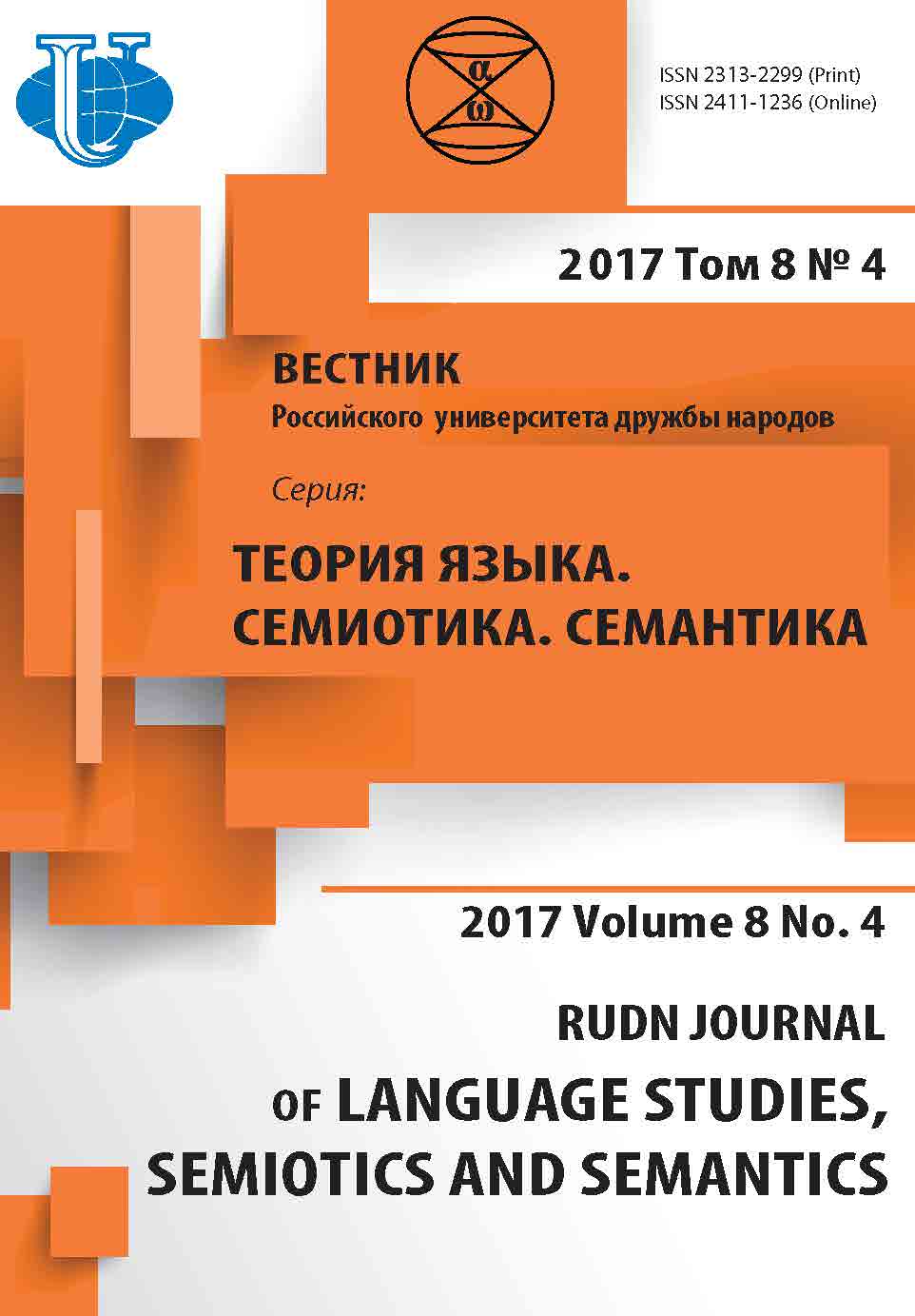“LATENT MEMORY” OF KET VERB
- Authors: Polenova G.T1
-
Affiliations:
- Anton Chekhov Taganrog Institute Institute (branch) of the Rostov State University of Economics (RINH)
- Issue: Vol 8, No 4 (2017)
- Pages: 1010-1019
- Section: Articles
- URL: https://journals.rudn.ru/semiotics-semantics/article/view/17981
- DOI: https://doi.org/10.22363/2313-2299-2017-8-4-1010-1019
Cite item
Full Text
Abstract
The article deals with relic elements in the structure of the Ket verb. The idea is held that there are no solid rules for the formation of the Ket verb, despite numerous attempts to classify types of verbs in the Ket language. The author applies the term introduced by T.M. Nikolaeva “the latent memory of the language” to the structural elements of the Ket verb. The author’s expeditionary materials are given as examples, whose analysis proves the absence of any firm patterns in the formation of the Ket verb. It is observed as agglutination in the simplest structures, as well as incorporation in complicated forms. It is con-cluded that the Ket verb can cast a light on the morphological stages of language development. The article can be of interest for linguists dealing with diachronic typology.
About the authors
Galina T Polenova
Anton Chekhov Taganrog Institute Institute (branch) of the Rostov State University of Economics (RINH)
Author for correspondence.
Email: polenova@mail.ru
Polenova Galina Tikhonovna, Doctor of Philology, Professor, Head of Sector of the Department German language of Anton Chekhov Taganrog Institute Institute (branch) of the Rostov State University of Economics (RINH); Scientific Interests: Theory of language, linguistics gourmet, Eniseyskiy, General linguistics
Ul. Initsiativnaya, 48, Taganrog, Russia, 347936References
- Belimov, S.S. (1991). The Ket syntax. Situation Proposition Sentence. Novosibirsk: NGU. (In Russ.).
- Butorin, S.S. (1995). Description of the morphological structure of the finite verbal word form of the Ket language using the method of ordinal division. Thesis of PhD. Novosibirsk: NGU. (In Russ.).
- Zhivova (Polenova), G.T. (1984). Yenisei-Indo-European typological parallels in the field of interrogative and indefinite pronouns. In: The structure of Paleo-Asiatic and Samoyedic languages. Tomsk: TGPI. 46—65. (In Russ.).
- Krejnovich, E.A. (1965). The verb of the Ket language. In: Morphological Typology and Problems of Classification of Languages. Leningrad: Nauka. (In Russ.).
- Krejnovich, E.A. (1968). The verb of the Ket language. Leningrad: Nauka. (In Russ.).
- Melnikov, G.P. (2000). Systemic typology of languages: synthesis of morphological classification of languages with a stadial one. Moscow: RUDN (In Russ.).
- Nikolaeva, Т.М. (2002). The “hidden memory” of the language: An attempt to formulate a problem. Voprosy Yazykoznania, 4. pp. 25—41. (In Russ.).
- Nikolaeva, Т.М. (2008). Non-paradigmatic linguistics (History of “wandering particles”)]. Moscow: Yazyki slavianskikh kultur. (In Russ.).
- Polenova, G.T. (2000). To the origins of Indo-European and Yenisei personal verbal indicators. In: Problems of studying the distant relationship of languages at the turn of the third millennium. Moscow: RGGU, 159—162. (In Russ.).
- Polenova, G.T. (2002). The origin of the grammatical categories of the verb. (On the material of the Yenisei languages). Taganrog: TGPI. (In Russ.).
- Polenova, G.T. (2011). In search of the origins of the language. Taganrog: TGPI A.P. Chekov. (In Russ.).
- Ryko, A.I. (2000). Semantic distribution of the third person of present tense. In: Balto-Slavic studies 1998—1999 XVI. Moscow: Indrik. 129 (In Russ.).
- Segal, D.M. (1968). Phonology of the Ket language. In: Ket collection. Linguistics. Mosc ow: Nauk a. pp. 31—32. (In Russ.).
- Fillmore, C. (1999). Case on the case; The case of the case is reopened. In: Foreign Linguistic III. New in foreign linguistics. Moscow: Progress. pp. 303—351. (In Russ.).
- Bouda, Karl. (1957). Die Sprache der Jenissejer. Genealogische und morphologische Untersuchungen. Anthropos, vol. 52, no 1—2. pp. 65—134.
- Shields, K. (1997). On the pronominal origin of the I—E athematic verbal suffixes, The jo urnal o f Indo-European studies. Vol. 25. No 1— 2.













